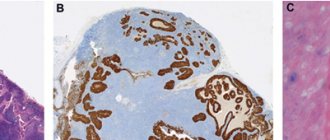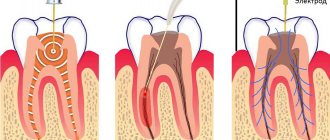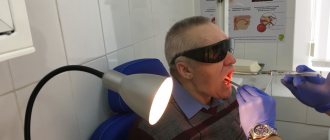About congestion in the throat
Every person has experienced pain, discomfort and a feeling of congestion in the throat many times in their lives.
This is due to the fact that a common cold, which is accompanied by swelling of the pharyngeal mucosa, irritates the nerve endings, creating pain and soreness in the throat. In many cases, an acute process, provided that immunity is not reduced, can be well treated at home in such a way as: gargling, drinking plenty of fluids. And yet, treating an inflammatory disease of the pharynx on your own at home is wrong, and therefore, against the background of such a disease, a chronic disease of the pharynx can develop: pharyngitis, chronic tonsillitis, and even chronic laryngitis. In certain cases, symptoms may appear: anxiety, a lump in the throat and bad breath.
Video treatment of chronic tonsillitis without surgery, 12:47 min.
When you have a sore throat, it is very common to look at your mouth in a mirror. Upon examination, you can see purulent plugs in the throat, white-yellow lumps of a cheesy nature with a rather unpleasant odor, emerging from the mucous membrane of the side walls of the pharynx. Such formations are called caseous plugs, which emerge from the lacunae of the palatine tonsils.
If you suddenly notice plugs in your throat of this nature, then you most likely have chronic tonsillitis. This disease is caused by inflammation in the palatine tonsils. The palatine tonsils are the same tonsils, a collection of lymphoid tissue that is limited from the lateral walls of the pharynx by a capsule. A special feature of the palatine tonsils is their anatomical structure.
Cauterization methods
| Method | What is used | Advantages | Flaws |
| Cryotherapy | A liquid nitrogen. Under the influence of liquid nitrogen, the tissue is greatly cooled. Ice crystals form inside the cells, destroying the cell wall. | Bloodless, painless method. Well tolerated by elderly patients. | To achieve a lasting effect, a course of procedures is required. |
| Laser ablation | CO2 laser, holminium or fiber optic laser. The effect is based on the evaporation of liquid (coagulation) of tissue due to laser heating. | Bloodless, painless method. | Heating of the tissues surrounding the tonsil, the formation of a layer of dead tissue, which disappears within 5-7 days. Within 2-3 days after the procedure, discomfort in the throat, similar to a cold. |
| Radio wave ablation | Alternating high-frequency current (radiosurgery devices Surgitron, Curis). The effect is achieved by heating the tissue and evaporating liquid from it. | Bloodless, painless method, good wound healing, gentle effect on surrounding tissues. The procedure is carried out once, and can be repeated after several years. | The formation of a layer of dead tissue, which disappears within 5-7 days; the next day after the procedure, discomfort in the throat, similar to a cold. |
Why shouldn't you remove throat plugs yourself?
If chronic tonsillitis has reached the stage of formation of plugs in the throat, then you will not be able to get rid of them on your own, without resorting to the help of a doctor. Quite often, the majority of those who encounter blockages in the throat, given the pain and bad breath, resort to removal on their own. This is achieved by pressing on the tonsil with your fingers, picking out plugs from the lacunae with a spoon or match. This method is categorically inappropriate, since the superficial part of the plug is removed, and not the depth of the tonsil.
Congestion in the throat is the result of pathomorphological processes that occur in the palatine tonsils as a result of chronic inflammation. Also, along with plugs in the throat, liquid fractions of pus may be present. Therefore, in order to get rid of congestion in the throat, it is necessary to influence all important components of the pathogenesis of chronic tonsillitis .
Independent methods of removing plugs in the throat will only aggravate the course of the disease (traumatization of tonsil tissue), which will further activate the scarring process in the area of the lacunae, which ultimately complicates the process of evacuation of purulent plugs. Neither all kinds of rinsing, nor other methods of self-medication will help properly, which, on the contrary, can ultimately lead to decompensation of chronic tonsillitis and the creation of plugs in the throat.
Blockages in the tonsils (throat)
The palatine tonsils are penetrated by many lacunae - small passages that communicate with each other.
The palatine tonsils, as organs of the immune system, help our body in forming a local immune response. Normally, bacteria, viruses and other infectious agents enter along with food into the lacunae of the palatine tonsils, where an immune response to pathogens that have entered our body begins to form.
Causes:
impaired evacuation of pus and food debris from the lacunae of the palatine tonsils.
Normally, during the act of swallowing, the palatine tonsils contract and the contents come out of the lacunae, i.e. the tonsils are cleansed (drained).
During inflammation, the self-cleaning of the tonsils is disrupted and the lacunae become “clogged.” The desquamated epithelium and food debris turn into plugs and caseous masses, which are often visible when examining the throat with the naked eye (while brushing your teeth...)
Complaints characteristic of “tonsil plugs”:
- discomfort in the throat,
- sensation of a foreign body in the throat,
- frequent ARVI,
- smell from the mouth,
- sore throat
- increase in body temperature to 37.1-37.5C in the evenings
- weakness, fatigue.
The accumulation of a large number of caseous masses and pus in the lacunae of the palatine tonsils leads to the formation of a chronic focus of infection in the palatine tonsils, weakens local immunity and leads to the development of chronic tonsillitis.
Do there be plugs in the tonsils without complaints?
Of course they come in small quantities. As a rule, such patients learn about the plug at an appointment with an ENT doctor, who, to check the contents of the lacunae of the tonsils, presses on the anterior palatine arches. At this time, the tonsil shrinks and plugs or pus come to the surface. ⠀
Large plugs are easy to see and patients often squeeze them out on their own using various blunt objects. For this purpose, patients use various available means: spoons, fingers, tongue, toothpicks...
Such self-medication can lead to inflammation of the tonsils. During strong mechanical compression, microtraumas occur, through which the infection penetrates into the tonsil.
WHAT CAN YOU DO YOURSELF TO REMOVE CLOGS?
I recommend gargling with HIGHLY carbonated mineral water. The liquid with gas dissolved in it enters the lacunae of the palatine tonsils and during the formation of gas bubbles, the plugs come out of the lacunae. You can add a teaspoon of “Chlorophyllipt” to highly carbonated mineral water.
How does an ENT doctor treat tonsil plugs?
- Washing of the palatine tonsils is a conservative method of treating chronic tonsillitis. The plugs are washed out of the lacunae of the palatine tonsils using a special “suction cup” or an atraumatic cannula.
- Lakunotomy (expansion of the lacunae of the palatine tonsils using a laser, radio waves, etc.). Widened and less deep lacunae are better cleared of plugs during the act of swallowing.
- tonsillectomy - complete removal of the tonsils, performed only in case of decompensated form of chronic tonsillitis => recurrent tonsillitis, history of paratonsillar abscesses, tonsillogenic intoxication, etc.)
THERE ARE CONTRAINDICATIONS!
SPECIALIST CONSULTATION IS REQUIRED!
BE HEALTHY!
Causes of purulent plugs in the throat
Unpleasant sensations and pain in the throat accompany any person throughout the illness. The symptoms and consequences of a disease such as a congestion in the throat may be different for everyone, and are determined only by a medical specialist. Diagnostics involves a blood test, smear and other medical procedures that allow you to correctly establish a diagnosis and prescribe effective treatment. Redness and sore throat can be eliminated at home, but purulent plugs in the throat of various etiologies certainly require special treatment and attention.
The cause of purulent plugs in the throat can be different. But the result of any cause may be inflammation of the tonsils. The tonsils are lymphoid tissue that protect the throat from various infections. A severe inflammatory process in the tonsils can be caused by various microbes, which is why a correct diagnosis can only be made by obtaining a smear of the larynx.
Sore throat can be caused by microbes such as streptococcus, pneumococcus, staphylococcus or adenoviruses, and diphtheria - by diphtheria microbes. Only timely treatment of purulent plugs in the throat will help avoid serious complications .
Purulent plugs in the throat in children and adults
In children of younger and older age categories, sore throat can often be observed with purulent plugs in the throat. Follicular and lacunar tonsillitis is marked by yellow and white purulent plugs; blisters with pus cover almost all the tonsils. The disease is accompanied by headaches, fever, general weakness, and loss of appetite. There are strong changes in the blood test, they are associated with a high content of leukocytes.
If there is suddenly a suspicion of diphtheria sore throat, the sick child should be hospitalized immediately. This disease is very dangerous with all sorts of complications in the future. Diphtheria is marked by purulent gray deposits, which cause great pain when removed. Suspicion of such a disease may arise already at the first examinations.
Parents often have questions about tonsil removal; such advice can only be given by the attending physician. Often, a child can simply “outgrow” tonsil disease, but if there is a serious risk of complications in the heart, joints and kidneys, then it is worth consulting with experienced specialists before making a decision.
Adult patients often turn to the doctor with the same questions about purulent plugs in the throat. A person constantly suffers from sore throat, pharyngitis, and purulent plugs in the throat are caused by the same diseases. Reduced immunity, poor environmental conditions, improper self-medication - all this causes chronic tonsillitis (chronic inflammation of the tonsils). With periodic exacerbations, chronic tonsillitis manifests itself as sore throat. The constant appearance of purulent plugs in the throat and bad breath bring anxiety and exhaust the patient.
An extremely dangerous complication is in the form of a peritonsillar abscess, which turns into phlegmon of the neck, which threatens the patient in case of negligence in the treatment of chronic tonsillitis. Diseases of the joints, heart and kidneys are very dangerous, as complications after previous diseases associated with the presence of purulent plugs in the throat.
Treating throat congestion
Congestion in the throat and bad breath can be so distressing that patients are often ready to resort to any measures, even removal of the tonsils (tonsillectomy). Such a solution in certain cases is very acceptable, but the point is that any operation must be seriously justified. Sometimes, having rushed to remove the tonsils and upset the anatomy and the natural protective mechanisms of the pharynx, in the near future a person may encounter a form of chronic pharyngitis, which is very difficult to treat and intensively worsens the quality of life. That is why, if you have plugs in your throat, do not under any circumstances delay removing your tonsils.
Congestion in the throat is not an indication for tonsillectomy, taking into account all the canons of otorhinolaryngology. With the right approach to treating purulent plugs in the throat, you can do without surgery, solving the problem in a conservative way . The ENT-Asthma clinic has developed and successfully used an effective method for treating chronic tonsillitis, consisting of a set of procedures. All actions are aimed, first of all, at eliminating all the important links in the pathogenesis of this disease, which allows you to actually get rid of congestion in the throat, preserving the tonsils.
Why is chronic tonsillitis dangerous?
Chronic tonsillitis is dangerous due to its complications associated with the spread of infection throughout the body. We often see that after treating tonsillitis, our patients are no longer bothered by all sorts of chronic diseases and allergies. The most severe complications of tonsillitis are rheumatism and severe kidney damage - glomerulonephritis. Toxins produced by some microbes tend to damage ligamentous and cartilage tissues, cause inflammation, as well as pain in joints and muscles.
How chronic tonsillitis affects the heart. Heart valve prolapses and heart rhythm disturbances are common findings when examining the heart in patients suffering from chronic tonsillitis. The fact is that the protein of beta-hemolytic streptococcus group A, which often parasitizes the tonsils, is similar to the protein of the connective tissue of the human heart and joints. Therefore, response aggression of the immune system is possible not only against streptococcus, but against one’s own heart and joints.
Chronic tonsillitis and allergies. Sometimes one course of treatment for tonsillitis is enough for allergic rashes, itching and even attacks of bronchial asthma to “magically” go away. The fact is that the long-term presence of an infectious focus in the tonsils not only reduces immunity, but also distorts its reactivity, causing allergic changes.








